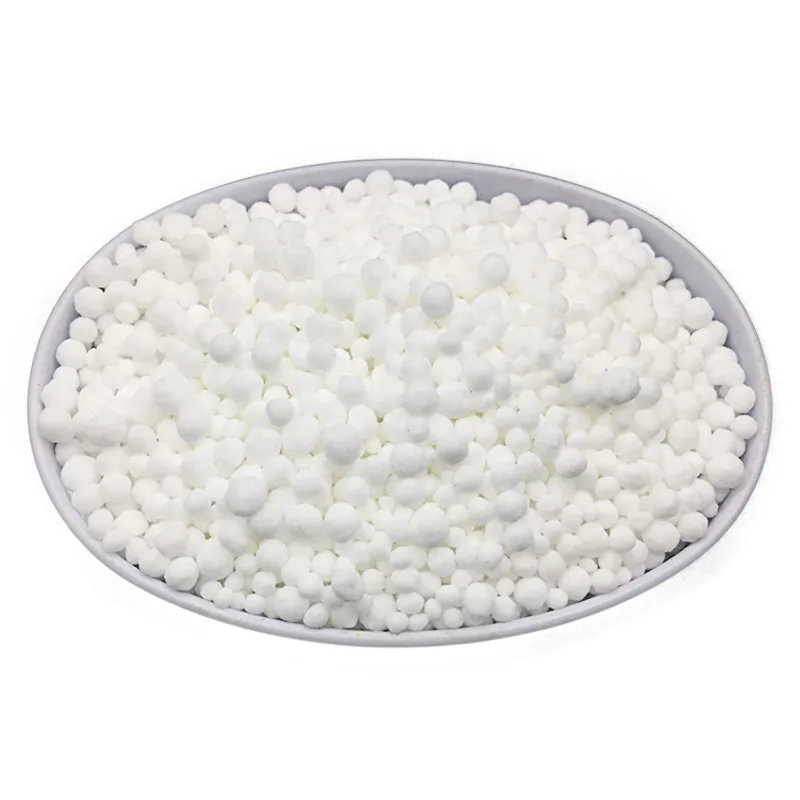
Dec . 17, 2024 00:38 Back to list
High-Quality Prilled Urea 46 for Optimal Crop Nutrition and Soil Health
Understanding Urea Prilled 46 A Comprehensive Overview
Urea prilled 46, commonly referred to as urea 46 or simply prilled urea, is a widely used nitrogenous fertilizer that contains 46% nitrogen by weight. This high nitrogen content makes it one of the most concentrated nitrogen fertilizers available in the agricultural market. Understanding urea prilled 46, its production, application, benefits, and environmental considerations is essential for farmers, agronomists, and those involved in agricultural practices.
Production of Urea Prilled 46
Urea is synthesized through the Haber-Bosch process, where ammonia (NH3) reacts with carbon dioxide (CO2) at high temperatures and pressures. The chemical reaction results in the formation of urea (CO(NH2)2). Once produced, the urea undergoes a process of granulation, where it is transformed into prills. Prilling involves spraying molten urea into a cooling chamber, leading to the formation of small, spherical granules. These prills are then dried and screened to achieve the desired size for agricultural use. The final product is a white, free-flowing granule that is easy to handle, store, and apply.
Application in Agriculture
Urea prilled 46 is predominantly used in agricultural settings as a nitrogen fertilizer for various crops, including grains, vegetables, and fruits. The nitrogen in urea is essential for plant growth, as it is a key component of amino acids, proteins, and nucleic acids. The application of urea promotes lush green foliage and enhances overall plant vigor.
Farmers typically apply urea prilled 46 in several ways broadcasting it over the soil surface, side-dressing during the growing season, or incorporating it into the soil before planting
. The timing of application is crucial, as it can significantly affect nutrient uptake by plants. For instance, applying urea during active growth phases ensures that crops can utilize the nitrogen effectively.Advantages of Urea Prilled 46
urea prilled 46

The use of urea prilled 46 offers several advantages. Firstly, its high nitrogen content means that farmers require less volume compared to other nitrogen sources, simplifying transportation and application. Secondly, its prilled form enables efficient distribution and reduces the risk of clumping.
Moreover, urea is relatively inexpensive when compared to other nitrogen fertilizers, making it an economically attractive option for many farmers. Its versatility allows it to be used on a wide range of crops and soil types, enhancing its appeal to agricultural producers.
Urea prilled 46 also has a neutral pH, which means it does not adversely affect soil acidity, an important factor in sustainable soil management practices. Additionally, the relatively low salt index of urea reduces the risk of plant root burn, making it safer to use in various soil conditions.
Environmental Considerations
Despite its advantages, the use of urea prilled 46 comes with environmental concerns that need to be addressed. One of the primary issues is nitrogen leaching, where excess nitrogen can escape into groundwater or surface water, leading to pollution and eutrophication of water bodies. This phenomenon can result in harmful algal blooms, which can disrupt aquatic ecosystems and affect water quality.
To mitigate these risks, proper application techniques and timing are essential. Farmers are encouraged to adopt best management practices, including soil testing to determine nutrient needs, using coated urea products that release nitrogen slowly, and employing techniques like split applications to reduce the risk of leaching.
Conclusion
In summary, urea prilled 46 is a vital component of modern agriculture, providing a concentrated source of nitrogen essential for crop growth. Its production process, application methods, and economic advantages make it a top choice for farmers worldwide. However, it is crucial to balance the benefits of urea use with environmental stewardship to ensure sustainable agricultural practices. By adopting best management practices, farmers can maximize crop yields while minimizing the environmental impact, paving the way for a more sustainable future in agriculture.
-
Premium 10 10 10 Fertilizer Organic for Balanced Plant Growth
NewsJul.29,2025
-
Premium 10 10 10 Fertilizer Organic for Balanced Plant Growth
NewsJul.29,2025
-
Premium 10 10 10 Fertilizer Organic for Balanced Plant Growth
NewsJul.29,2025
-
50 Pound Bags of 13-13-13 Fertilizer for All Plants – Bulk & Organic Options
NewsJul.28,2025
-
High-Efficiency 15-30-15 Granular Fertilizer for Healthy Crops
NewsJul.28,2025
-
15-30-15 Granular Fertilizer for Optimal Crop & Lawn Growth
NewsJul.27,2025
